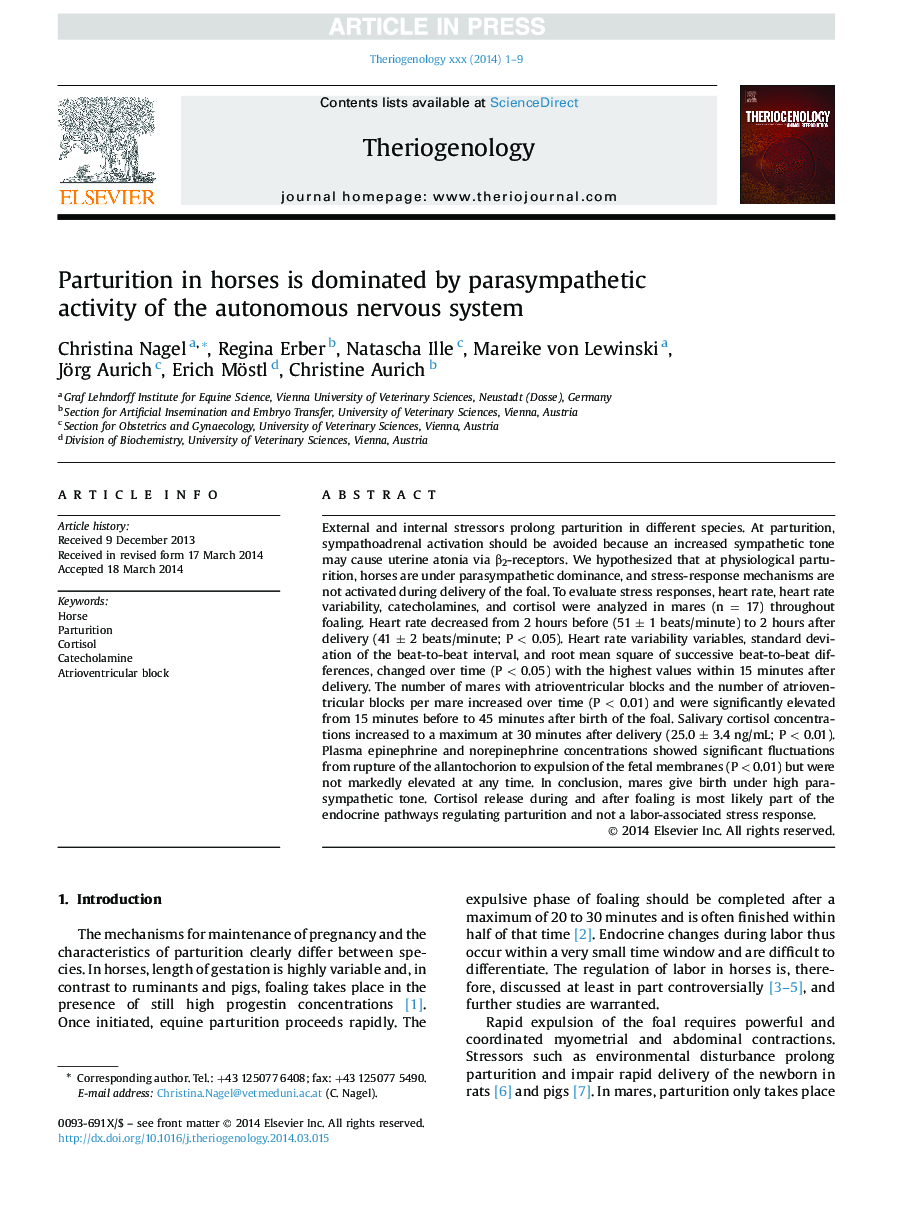| Article ID | Journal | Published Year | Pages | File Type |
|---|---|---|---|---|
| 10892027 | Theriogenology | 2014 | 9 Pages |
Abstract
External and internal stressors prolong parturition in different species. At parturition, sympathoadrenal activation should be avoided because an increased sympathetic tone may cause uterine atonia via β2-receptors. We hypothesized that at physiological parturition, horses are under parasympathetic dominance, and stress-response mechanisms are not activated during delivery of the foal. To evaluate stress responses, heart rate, heart rate variability, catecholamines, and cortisol were analyzed in mares (n = 17) throughout foaling. Heart rate decreased from 2 hours before (51 ± 1 beats/minute) to 2 hours after delivery (41 ± 2 beats/minute; P < 0.05). Heart rate variability variables, standard deviation of the beat-to-beat interval, and root mean square of successive beat-to-beat differences, changed over time (P < 0.05) with the highest values within 15 minutes after delivery. The number of mares with atrioventricular blocks and the number of atrioventricular blocks per mare increased over time (P < 0.01) and were significantly elevated from 15 minutes before to 45 minutes after birth of the foal. Salivary cortisol concentrations increased to a maximum at 30 minutes after delivery (25.0 ± 3.4 ng/mL; P < 0.01). Plasma epinephrine and norepinephrine concentrations showed significant fluctuations from rupture of the allantochorion to expulsion of the fetal membranes (P < 0.01) but were not markedly elevated at any time. In conclusion, mares give birth under high parasympathetic tone. Cortisol release during and after foaling is most likely part of the endocrine pathways regulating parturition and not a labor-associated stress response.
Related Topics
Life Sciences
Agricultural and Biological Sciences
Animal Science and Zoology
Authors
Christina Nagel, Regina Erber, Natascha Ille, Mareike von Lewinski, Jörg Aurich, Erich Möstl, Christine Aurich,
